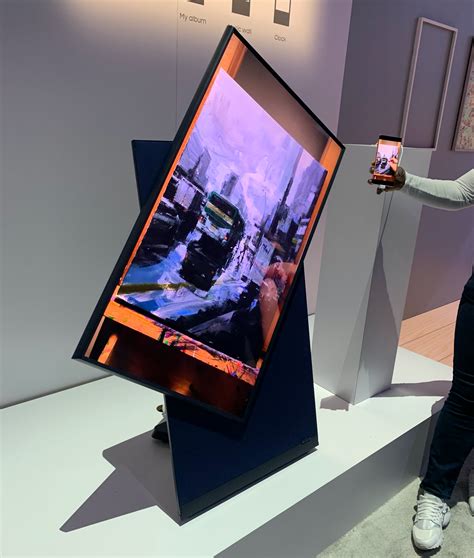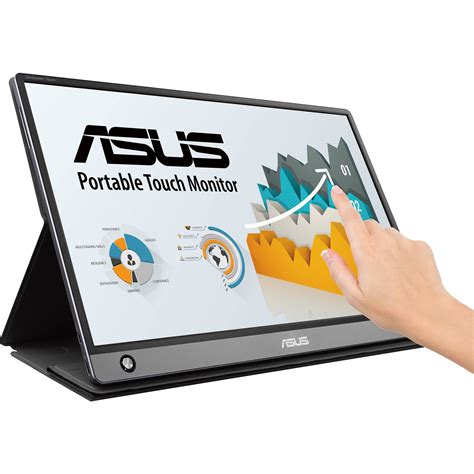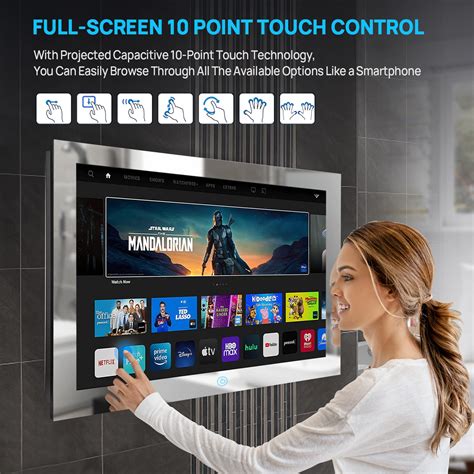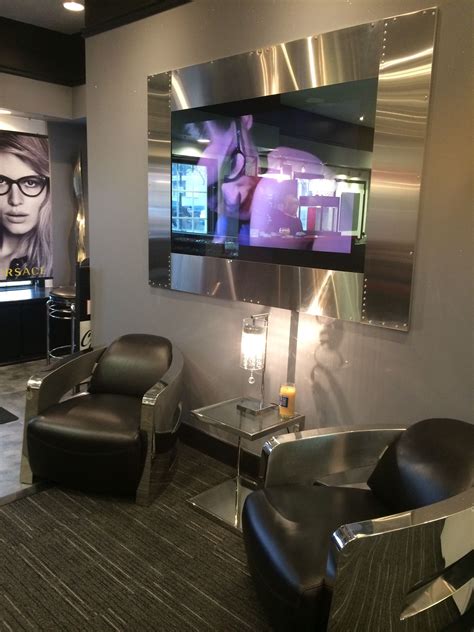Mirror Monitors: A Comprehensive Guide

Mirror Monitors: A Comprehensive Guide
Introduction
Mirror monitors, also known as mirror displays or mirroring monitors, are a specialized type of display technology that allows users to extend their computer’s desktop onto multiple monitors. Unlike traditional monitors, which display separate images, mirror monitors duplicate the same image across all connected displays. This capability makes them ideal for a wide range of applications, including:
- Collaboration: Sharing presentations, documents, and other visual content with multiple viewers simultaneously.
- Surveillance: Monitoring multiple security cameras or other video feeds from a single location.
- Gaming: Creating immersive gaming experiences by extending the game’s display across multiple monitors.
- Education: Displaying educational materials or presentations to a large audience.
- Digital signage: Creating eye-catching displays for advertising, information dissemination, or entertainment.
Types of Mirror Monitors
Mirror monitors come in various types, each designed for specific applications and environments. The most common types include:
- LCD Mirror Monitors: These monitors use liquid crystal display (LCD) technology to produce high-quality images with wide viewing angles. They are suitable for most general-purpose applications, including collaboration, surveillance, and gaming.
- OLED Mirror Monitors: Organic light-emitting diode (OLED) monitors offer superior image quality with deep blacks, vibrant colors, and fast response times. They are ideal for applications where color accuracy and image quality are paramount, such as digital signage and professional photography.
- LED Mirror Monitors: Light-emitting diode (LED) monitors use LED backlighting to provide bright and energy-efficient displays. They are suitable for applications where brightness and low power consumption are important, such as outdoor digital signage and retail displays.
- Touchscreen Mirror Monitors: These monitors incorporate touchscreen technology, allowing users to interact with the displayed content directly. They are ideal for interactive applications, such as educational presentations, point-of-sale systems, and self-service kiosks.
Features to Consider When Choosing Mirror Monitors
When selecting mirror monitors, several key features should be considered to ensure they meet the specific requirements of the intended application:
- Resolution: The resolution of a monitor determines the number of pixels it can display. Higher resolutions provide sharper and more detailed images.
- Size: The size of a monitor is measured diagonally from corner to corner. Larger monitors provide a more immersive experience but may require more space.
- Aspect Ratio: The aspect ratio of a monitor refers to the ratio of its width to its height. Common aspect ratios include 16:9, 16:10, and 21:9.
- Brightness: The brightness of a monitor is measured in nits and determines how well it can be viewed in different lighting conditions.
- Contrast Ratio: The contrast ratio of a monitor refers to the difference between the brightest and darkest colors it can display. Higher contrast ratios provide more vibrant and realistic images.
- Viewing Angles: The viewing angles of a monitor determine how well it can be viewed from different angles. Wide viewing angles allow for more flexibility in placement and viewing positions.
- Connectivity: Mirror monitors typically support various connectivity options, such as HDMI, DisplayPort, and USB-C. Ensure that the monitors have the necessary ports to connect to the desired devices.
- Mounting Options: Mirror monitors can be mounted on walls, desks, or stands. Consider the available mounting options and choose monitors that support the desired mounting method.
Benefits of Using Mirror Monitors
Mirror monitors offer several advantages over traditional monitors, including:
- Increased Collaboration: Mirror monitors allow multiple users to view the same content simultaneously, facilitating collaboration and shared decision-making.
- Enhanced Surveillance: By displaying multiple video feeds on a single screen, mirror monitors provide a comprehensive view of surveillance areas, improving security and situational awareness.
- Immersive Gaming: Extending games across multiple monitors creates a more immersive and engaging gaming experience, enhancing the gameplay and enjoyment.
- Effective Education: Mirror monitors enable educators to display educational materials to large audiences, improving student engagement and comprehension.
- Captivating Digital Signage: Mirror monitors can create eye-catching and dynamic digital signage displays, attracting attention and effectively conveying messages.
Applications of Mirror Monitors
Mirror monitors find applications in a wide range of industries and settings, including:
- Business and Collaboration: Meeting rooms, conference rooms, and huddle spaces.
- Security and Surveillance: Control rooms, security centers, and monitoring stations.
- Gaming: Home entertainment systems, gaming centers, and esports arenas.
- Education: Classrooms, lecture halls, and training facilities.
- Retail and Hospitality: Digital signage, point-of-sale systems, and self-service kiosks.
- Healthcare: Patient monitoring, medical imaging, and surgical suites.
- Transportation: Control centers, vehicle dashboards, and passenger information systems.
Conclusion
Mirror monitors are a versatile and powerful display technology that extends the capabilities of computers and enhances the user experience in various applications. By carefully considering the features and benefits of different types of mirror monitors, users can select the optimal solution for their specific needs. From collaboration and surveillance to gaming and digital signage, mirror monitors offer a wide range of possibilities for improved productivity, enhanced security, immersive entertainment, and effective communication.
5 Best Mirror Monitors for Enhanced Productivity and Aesthetics
Mirror monitors combine the functionality of a traditional monitor with the sleek design of a mirror, offering a unique and practical solution for various applications. Here are the top 5 mirror monitors that stand out in the market:
1. Samsung The Sero

The Samsung The Sero is a versatile mirror monitor that can be rotated vertically or horizontally to suit your needs. Its 43-inch QLED display delivers stunning visuals, while the built-in speakers provide immersive audio.
2. ASUS ZenScreen Touch

The ASUS ZenScreen Touch is a portable mirror monitor with a 15.6-inch IPS display. It features a 10-point multi-touch screen, making it ideal for presentations, collaboration, and digital art.
3. Haier Mirror TV

The Haier Mirror TV is a smart mirror monitor that seamlessly integrates into your bathroom or dressing room. Its 24-inch LED display allows you to watch TV, check the weather, or control smart home devices while getting ready.
4. Xiaomi Mi Smart Mirror

The Xiaomi Mi Smart Mirror is a sleek and affordable mirror monitor with a 13.3-inch IPS display. It features a built-in camera and microphone, allowing you to make video calls and control your smart home devices hands-free.
5. Seura Vanishing Series

The Seura Vanishing Series is a high-end mirror monitor designed for luxury homes and commercial spaces. Its ultra-thin design and customizable frame allow it to blend seamlessly into any décor.
